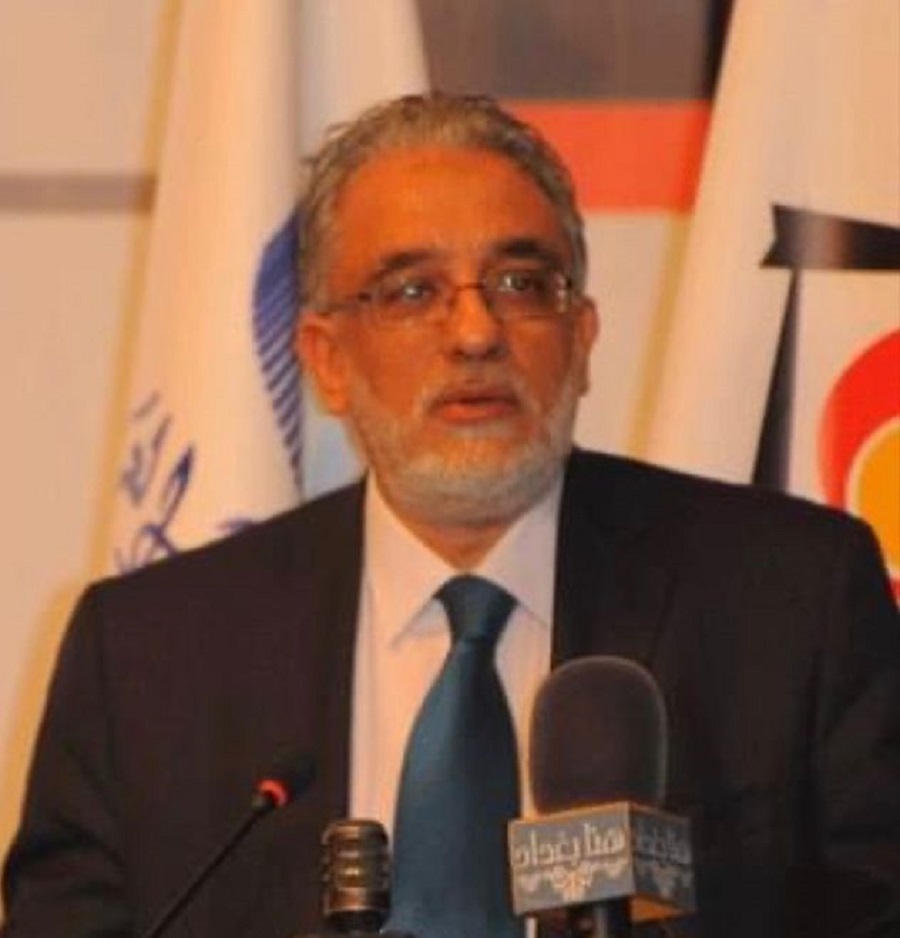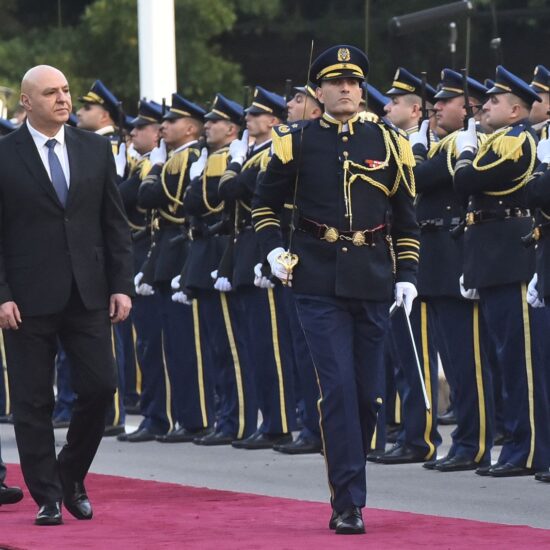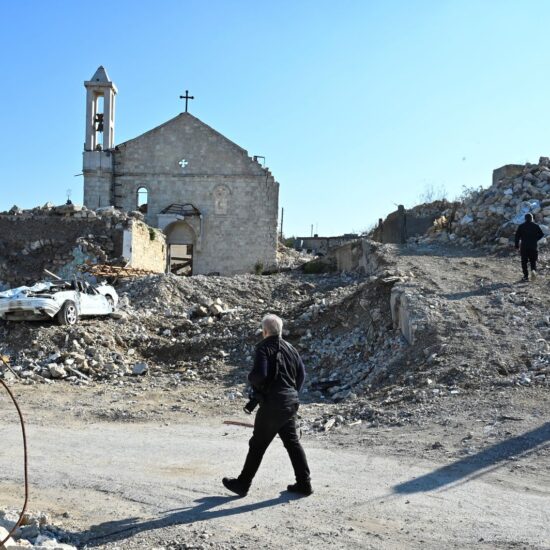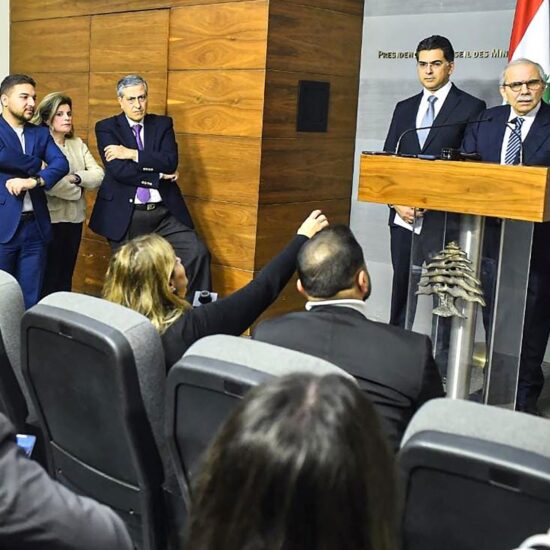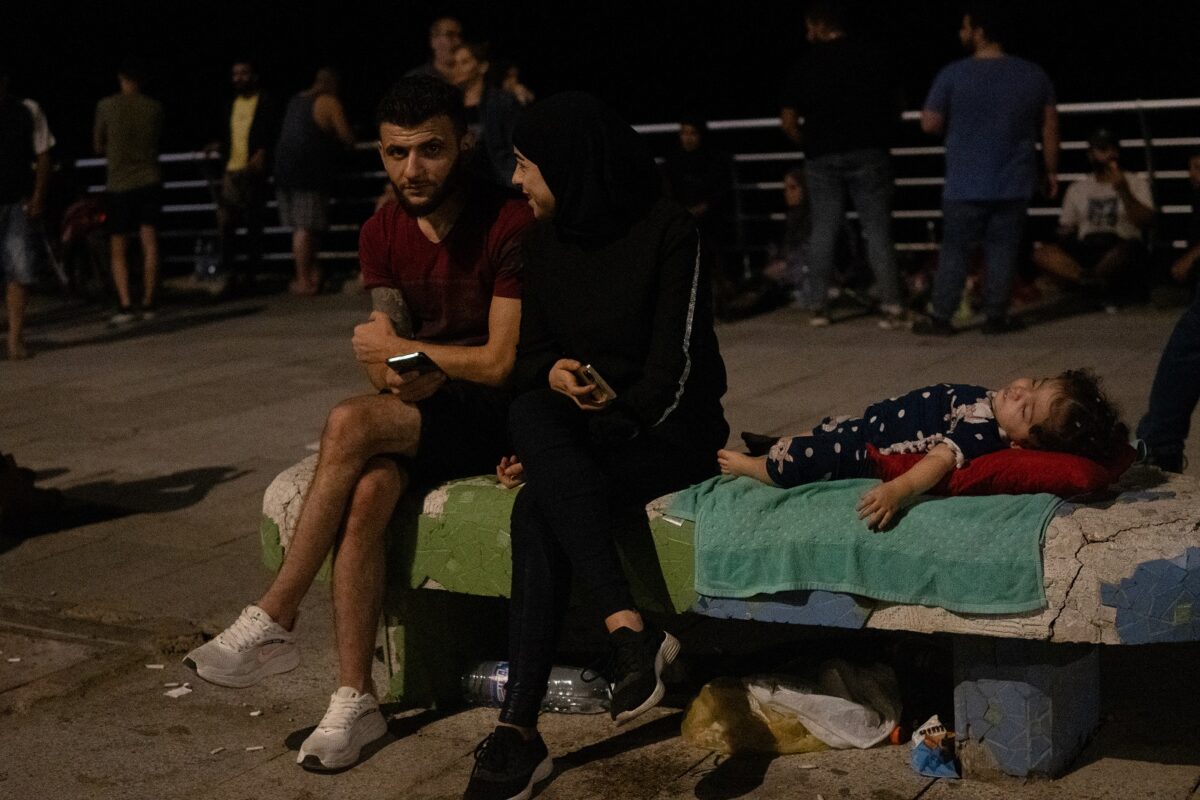
The Lebanese government response seems less of a plan and more of a cruel joke as thousand flee the south, with NGOs being totally absent in conflict zones and shelters
Ahmad, 54, sits on a crumbling stone bench in Beirut’s Martyr Square, his eyes scanning the horizon, waiting for something—anything—to change. He’s been here for days, though time has become meaningless to him, blending into a dull ache of anxiety. The southern suburbs, his home, are a distant memory now, a place where bombs fall more often than rain. He fled in a hurry, grabbing what little he could—an old photograph of his children, a few clothes, his worn-out shoes. Now, like many others, he waits. He waits as the city around him swirls with chaos and fear, as families huddle together, whispering prayers, and as the once-bustling square has turned into a makeshift refuge for the displaced. Every now and then, a rumour spreads through the crowd—talk of ceasefires, negotiations, some faint hope that the fighting will end. But these whispers are as fleeting as the breeze that occasionally stirs the hot air. Nothing comes of them. Ahmad’s thoughts wander back to his home, now abandoned and possibly in ruins. He wonders if there will be anything left to return to, or if he will remain here, in this limbo of waiting. The air smells of dust and sweat, mixed with the faint scent of fear that everyone carries in their eyes. Ahmad knows he’s not alone in his waiting, but that doesn’t make it easier. The square is full, yet silent, as if everyone is waiting for the same thing—a resolution, a return to normalcy, a sign that life can continue. But for now, Ahmad remains in Martyr Square, a man adrift, waiting for a peace that never seems to come, wondering if he will wait forever.
There are many kinds of displaced people in this crisis. Some, with means, have relocated to luxury apartments and hotels. Others, with connections, have found refuge in empty apartments. Then there are those who managed to secure a spot in public schools, a “first-come, first-serve” situation. But many have been left behind—families without a penny to their name, no car to flee, not even enough money to pay for fuel. These people remain stranded, unable to escape the conflict, forgotten in a country that has failed them when they needed help the most.
The government of Lebanon once more proved that it is a beacon of competence and efficiency; its latest masterpiece is the emergency plan for the South.
Supposedly the government crafted a plan to help people escape the horrors of conflict and ensure their safety during times of crisis. However, the magical, mythical plan might as well have been scribbled on the back of a napkin during a three-hour lunch break. Because in practice, it’s been about as effective as using a fork to drink soup.
Impossible flight as roads are blocked
The basic premise of this plan: the government’s grand strategy to evacuate the residents of southern Lebanon. The officials surely must have patted themselves on the back for this one. A plan so foolproof, they thought, that it would effortlessly whisk tens of thousands of people out of harm’s way in a perfectly coordinated operation.
The reality? People have been left stranded on roads for hours—sometimes even days—without food, water, or basic shelter, desperately trying to reach safety. And by “trying,” this means crawling along like snails on a highway that leads straight to nowhere, families, already traumatized by the sounds of shelling and gunfire, grabbing whatever they can carry and packing into cars, only to sit in traffic for hours, staring blankly at a line of other equally stuck vehicles. The whole thing looks like an apocalyptic road trip, except there’s no destination, no roadmap, and no sign of rescue.
Hana is 21, but the last few days had aged her beyond her years. Fleeing their village in southern Lebanon under a hail of shelling, she sat in the backseat of her father’s car, gripping the door handle as if it could protect her from the chaos outside. The road ahead, normally a two-hour drive to Beirut, stretched out impossibly long. 60 kilometers felt like a lifetime. It had been hours—seven, eight, maybe more—since they left their home, and the sky was growing dark. The constant rumble of shelling in the distance was a reminder that time was running out, and they weren’t even halfway there. The traffic was relentless, cars packed with families just like hers, desperate to escape. Suddenly, it hit. A wave of dizziness swept over her, and she felt the familiar pull, the awful sensation building inside her chest. “No, not now,” she thought, panic rising. Her father glanced back from the driver’s seat, his face drawn with worry. He knew what was coming. The seizure came in a flash—her body stiffened, her vision blurred. Her father veered the car to the side of the road as best he could, barely missing the cars creeping along. Hana’s world turned into a blur of flashing lights, muffled sounds, and convulsions she couldn’t control. Her father’s voice, shaky but steady, called her name over and over, trying to pull her back to consciousness. It felt like hours before the seizure passed, though it was likely just minutes. When she came to, the traffic still hadn’t moved, and the sounds of shelling still echoed in the distance. She lay there, exhausted, knowing there were still kilometers of road ahead. The 60 kilometers to Beirut would take 14 long, harrowing hours—hours that stretched between life, survival, and hope. It’s like the government said, “Hey, why not turn the escape from war into a slow-motion endurance test?” But don’t worry, the government assures us, it’s all part of the plan! In their infinite wisdom, the officials managed to create an emergency plan that apparently left out one tiny detail: the actual emergency. You know, the part where people need to leave, and quickly. Perhaps they assumed that displaced families, desperate to avoid bombs and bullets, would happily sit around on the side of the road, twiddling their thumbs and enjoying the scenery. After all, who doesn’t want to spend a relaxing day in a traffic jam during wartime?
Let’s talk about the “safe places” the government promised. Those idyllic refuges where the displaced would be welcomed with open arms and given all the necessary supplies to ride out the storm. Spoiler alert: they don’t exist or they were schools opened hastily without any mattresses or even hygiene products. Because why bother with logistics? It’s not like people need food, water, or a place to sleep when they’re fleeing for their lives, right?
But perhaps the most tragic aspect of this entire situation is the human toll. These are real people, with real families, trying to escape an unimaginable nightmare. They’ve already lost so much—homes, livelihoods, loved ones. And now, in their most desperate hour, they’ve been abandoned on the roads, left to fend for themselves while the government fumbles through yet another crisis. It’s not just incompetence—it’s negligence on a grand scale. It is not news to say that most people in Lebanon are unable to secure their economic and social rights amid the deepening economic crisis, with low-income households bearing the brunt of the crisis. Existing social assistance programs, funded in part by the World Bank, extended minimal coverage and very narrowly targeted households in extreme poverty, leaving large segments of the population who did not qualify vulnerable to hunger, unable to obtain medicines, and subject to other deprivations that undermine their rights.
The heavy toll
Since the outbreak of hostilities in Gaza on October 7, 2023, cross-border clashes between Israel and Hezbollah have escalated daily, resulting in extensive damage to both public and private property. As of September 25, Lebanon’s Ministry of Health reported 558 fatalities (including 50 children) and 1,835 injuries. As of August 20, 2024, these clashes have also forced the internal displacement of an estimated 111,940 people. As of 24 September, around 200,000 people were estimated to be displaced in Lebanon. According to the International Organization for Migration (IOM), a total of 111,656 people were reported displaced in the country between October 2023 and 17 September 2024. An additional 90,530 persons have been displaced from 17 to 24 September. As of mid-day on 25 September, a total of 490 individuals were registered in the UNRWA emergency shelters, with numbers expected to double.
As of last week reports confirm the displacement of more than 250,000 people. Latest data from Lebanon’s interior ministry indicates that 70,100 internally displaced people are now registered inside 533 government-run centers. Some The Lebanese authorities are giving a number as high as 500,000 displaced people following months of hostilities between Hezbollah and Israel.
The ongoing intensive airstrikes have displaced tens of thousands of civilians, with many seeking refuge in the north.
More than a human plight
The city of Saida, located in the south, has seen a significant influx of displaced persons, leading to shortages of essential supplies such as bread and drinking water. More than 500 Syrians were denied relocation in schools, they were forced to live in bus stations, their women’s needs were made in a car.
Mouhib told NOWLEBANON that they were bullied daily from passing by persons to incite them to go back to Syria, an impossible move according to him.
An estimated 1.5 million Syrians live in Lebanon, out of an estimated population of just over 5.3 million, making it the country with the highest proportion of refugees in the world.
Anti-refugee sentiment in the country is not new, but it has increased significantly in the last few years, following the start of Lebanon’s economic crisis in 2019.As of September 24, an estimated 200,000 people were displaced across Lebanon. The IOM reported that between October 2023 and September 17, 2024, a total of 111,656 people were displaced, with an additional 90,530 displaced between September 17 and 24. The Government of Lebanon (GoL) and its institutions are stretched beyond capacity, particularly affecting the overwhelmed healthcare sector, which is struggling to treat hundreds of wounded. In response, the GoL has designated 240 schools and educational facilities as shelters for displaced persons. However, it remains unprepared to manage the scale of the crisis and provide sufficient food assistance.
Most of the displaced are fleeing the southern district and Nabatieh, heading toward Beirut, Mount Lebanon, and eastern areas including Baalbeck-Hermel and Akkar. Additionally, Palestinians from communities in Tyre and Saida—including Adloun, Ansariya, Zahriya, and Nabatiye—have been displaced toward Saida and northern regions, with many staying with family members in other cities and camps.
UNRWA confirmed that it has prepositioned supplies across the country in six storage facilities: Lebanon Field Office in Beirut, Houleh School and Mansoura School in Tyre, the Siblin Training Center in Saida and Saadnayel storage facility in the Beqaa Valley. The supplies are being moved, monitored and replenished according to UNRWA emergency shelter needs and the overall situation.
An UNRWA source confirmed to NOW Lebanon that UNRWA has repositioned supplies include 5,000 ready-to-eat food parcels, 3,500 standard dry food parcels, drinking water, mattresses and pillows, cleaning supplies, hygiene kits, first aid kits and approximately 700 tons of flour ready to be distributed across the UNRWA emergency shelters. According to the UN, there were nearly 520,000 Palestinian refugees, including over 31,000 from Syria, living in Lebanon, where they continued to face restrictions, including on their right to work and own property.
NOWLEBANON has toured these places and witnessed a lack of basic needs. In Tyre, some Palestinian refugees have sought refuge in the city’s refugee camps, including Burj Shemali, Rashidieh, and El-Buss.
Ahmad, owner of goats, told NOW he will not flee without his goats. He added that he has spent more than a week in a public school in Tyre without food or proper hygiene with a family of 11.
As of now, 121 households, totaling 490 people, are registered in three UNRWA emergency shelters across the country. Of these individuals, 24% are Palestinian, 29% are Syrian, and 47% are Lebanese. Among the Palestinians, 65% are Palestine Refugees from Lebanon (PRL) and 35% are Palestinian refugees from Syria (PRS). The number of displaced people continued to rise on September 25.
Nonchalance at its best
The real kicker? This isn’t the first time Lebanon’s government has rolled out a half-baked plan during a crisis. They have quite the track record. Whether it’s managing an economic collapse, handling a global pandemic, or responding to a deadly explosion, their approach is always the same: act surprised, throw together a plan at the last minute, and then act even more surprised when it all goes horribly wrong. At this point, they should just skip the planning phase altogether and go straight to the “we’re sorry for the inconvenience” press conference. What makes this even more infuriating is that the people of southern Lebanon have been living under the shadow of conflict for decades. This isn’t a new problem. It’s not like the government didn’t have time to prepare. The need for an emergency evacuation plan has been glaringly obvious for years, yet here we are, watching families languish on the sides of roads like some tragic, never-ending version of a traffic jam from hell.
You’d think in the age of smartphones and instant messaging, the government could at least inform people about what’s happening. Maybe a little heads-up about which roads are safe, where to find shelter, or what areas to avoid? Nope. Radio silence. People are left guessing, relying on rumors and social media posts from others in the same situation. It’s like playing a deadly game of telephone, where misinformation spreads faster than the actual news. In fact, let’s give some credit where it’s due.
The only thing moving faster than the stalled cars on the roads are the government’s empty promises. They assured the public that their emergency plan was solid, that no one would be left behind, and that help was on the way. And technically, they’re not wrong.
It’s worth asking: What exactly does it take for the Lebanese government to get something right? Because time and time again, they’ve proven that when it comes to protecting their own people, they are woefully unprepared. Maybe they think that by just announcing a plan, they’ve done their job. Maybe they believe that a few press releases and some handshakes are enough to solve the problem. Or maybe, just maybe, they don’t care at all. At the end of the day, the so-called emergency plan for southern Lebanon is less of a plan and more of a cruel joke. It’s a reminder of just how out of touch the government is with the reality on the ground. While they scramble to put out fires of their own making, the people they are supposed to protect are left stranded, hungry, and scared, with no clear path to safety.
What would the scenario look like if Israel launched a ground invasion, leaving the Lebanese government helpless to respond? It’s a question that has crossed many minds, especially given the state’s history of paralysis in times of crisis. A ground invasion would not only escalate the ongoing conflict but would also trigger widespread displacement, panic, and destruction. The Lebanese government, already overwhelmed and stretched beyond capacity, would likely be incapable of managing the fallout. Infrastructure would crumble under the weight of war, and already fragile institutions—like healthcare, social services, and emergency response—would collapse. Civilians, left to fend for themselves, would face chaos as the government struggles to organize evacuations, provide shelter, or deliver basic supplies like food and water. The already displaced populations from the south would swell, flooding cities like Beirut, which would become overcrowded, further stressing resources. Without a coordinated national defense or a clear strategy, Lebanon could quickly descend into a humanitarian disaster, where the state fails to protect its citizens or maintain even a semblance of control. In such a grim scenario, people would be left with one question: if the government cannot act now, what hope is there for the future?
So, congratulations to the Lebanese government. You’ve done it again. You’ve managed to turn a life-or-death crisis into yet another example of your stunning ineptitude. The displaced people of southern Lebanon are still waiting—waiting for a plan that works, for roads that are clear, and for a government that actually cares. And sadly, it seems they’ll be waiting for a long time.
Maan Barazy is an economist and founder and president of the National Council of Entrepreneurship and Innovation. He tweets @maanbarazy.
The views in this story reflect those of the author alone and do not necessarily reflect the beliefs of NOW.


